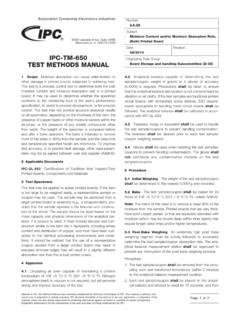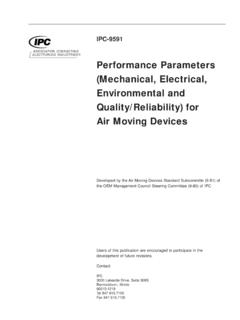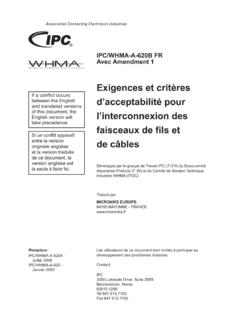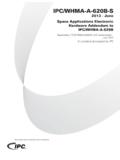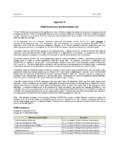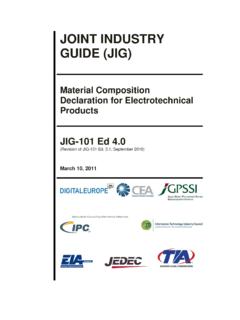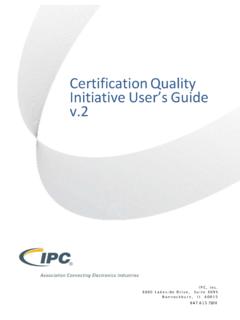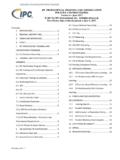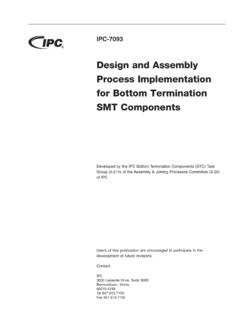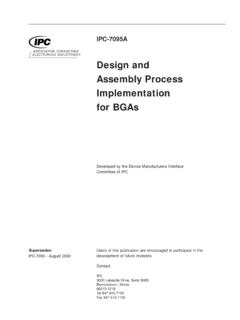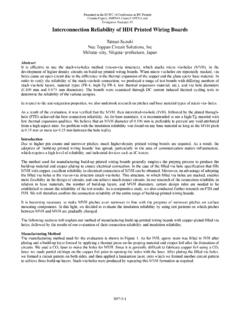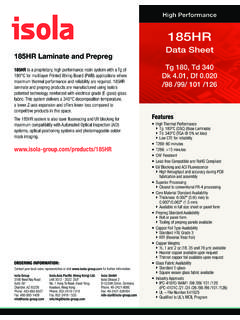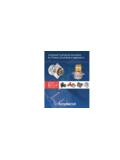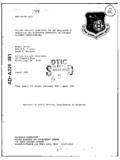Transcription of ASSOCIATION CONNECTING ELECTRONICS …
1 IPC-2221 AGeneric Standard onPrinted board DesignDeveloped by the IPC-2221 Task Group (D-31b) of the Rigid PrintedBoard Committee (D-30) of IPCU sers of this publication are encouraged to participate in thedevelopment of future :IPC2215 Sanders RoadNorthbrook, Illinois60062-6135 Tel 847 847 :IPC-2221 - February 1998 ASSOCIATION CONNECTINGELECTRONICS INDUSTRIES FOREWORDThis standard is intended to provide information on the generic requirements for organic printed board design. All aspectsand details of the design requirements are addressed to the extent that they can be applied to the broad spectrum of thosedesigns that use organic materials or organic materials in combination with inorganic materials (metal, glass, ceramic, etc.)to provide the structure for mounting and interconnecting electronic , electromechanical, and mechanical components. It iscrucial that a decision pertaining to the choice of product types be made as early as possible. Once a component mountingand interconnecting technology has been selected the user should obtain the sectional document that provides the specificfocus on the chosen may be more effective to consider alternative printed board construction types for the product being designed.
2 As anexample the application of a rigid-flex printed wiring board may be more cost or performance effective than using multipleprinted wiring boards, connectors and s documentation strategy is to provide distinct documents that focus on specific aspect of electronic packaging this regard document sets are used to provide the total information related to a particular electronic packaging topic. Adocument set is identified by a four digit number that ends in zero (0).Included in the set is the generic information which is contained in the first document of the set and identified by the fourdigit set number. The generic standard is supplemented by one or many sectional documents each of which provide specificfocus on one aspect of the topic or the technology selected. The user needs, as a minimum, the generic design document,the sectional of the chosen technology, and the engineering description of the final technology changes specific focus standards will be updated, or new focus standards added to the document set.
3 The IPCinvites input on the effectiveness of the documentation and encourages user response through completion of Suggestionsfor Improvement forms located at the end of each OF IPC DESIGN SPECIFICATIONS(2220 SERIES)IPC-2222 RIGIDIPC-2223 FLEXIPC-2224 PCMCIAIPC-2225 MCM-LIPC-2226 HDISIPC-2221 GENERIC DESIGNT able of .. Hierarchy .. of Terms .. of Products .. Type .. Classes .. Level .. Level Changes .. 22 APPLICABLE .. Industry Standards .. of Automotive Engineers .. Society for Testing and Materials .. Labs .. 43 GENERAL Hierarchy .. of Precedence .. Layout .. Requirements .. Evaluation .. Diagram .. List .. Requirement Considerations .. board Assembly Testability .. Scan Testing .. Test Concern for printed BoardAssemblies .. Test Concerns for printed BoardAssemblies .. Evaluation .. Layout Design .. Density Evaluation .. Requirements .. Selection .. Selection for Structural Strength.
4 Selection for Electrical Properties .. Selection for EnvironmentalProperties .. Base Materials (IncludingPrepregs and Adhesives) .. Bonding Layer (Prepreg) .. Films or Sheets .. Conductive Adhesives .. Conductive/ElectricallyInsulating Adhesives .. Materials .. Pigmentation .. Thickness/Spacing .. Materials .. Copper Plating .. Coatings .. Copper Plating .. Plating .. Plating .. Plating .. Coating .. Metallic Coatings for EdgeboardContacts .. Foil/Film .. Component Materials .. Protective Coatings .. Resist (Solder Mask) Coatings .. Coatings .. Protective Coatings .. and Legends .. Considerations .. 265 MECHANICAL/PHYSICAL Considerations .. board Fabrication .. Configuration .. Type .. Size .. Geometries (Size and Shape) .. and Twist .. Strength .. (Constraining-Core) Boards .. Design .. 29 IPC-2221 AMay Requirements .. Hardware Attachment .. Support.
5 And Test .. Systems .. and Tolerances .. and Feature Location .. Features .. 316 ELECTRICAL Considerations .. Performance .. Distribution Considerations .. Type Considerations .. Material Requirements .. Clearance .. Internal Conductors .. External Conductors, Uncoated, SeaLevel to 3050 m [10,007 feet] .. External Conductors, Uncoated, Over3050 m [10,007 feet] .. External Conductors, with PermanentPolymer Coating (Any Elevation) .. External Conductors, with ConformalCoating Over Assembly (Any Elevation) .. External Component Lead/Termination,Uncoated, Sea Level to 3050 m[10,007 feet] .. External Component Lead/Termination,with Conformal Coating (Any Elevation) .. Controls .. Microstrip .. Properties .. Stripline Properties .. Considerations .. Considerations .. 477 THERMAL Mechanisms .. Effects .. Dissipation Considerations .. Component Heat Dissipation .. Management Considerations forBoard Heatsinks.
6 Of Heatsinks to Boards .. Design Considerations for SMTB oard Heatsinks .. Transfer Techniques .. of Thermal Expansion (CTE)Characteristics .. Transfer .. Matching .. Design Reliability .. 538 COMPONENT AND ASSEMBLY Placement Requirements .. Assembly .. Placement .. Envelope .. Body Centering .. Over Conductive Areas .. Support .. Dissipation .. Relief .. Attachment Requirements .. Mounting .. Assemblies .. Considerations .. and Interconnects .. Hardware .. for Flattened Round Leads .. Terminals .. Wiring .. Shrinkable Devices .. Bar .. Cable .. Requirements .. Mounted in Through-Holes .. Surface Mount Requirements .. Leaded Components .. Components .. Lead Termination .. Lead Termination .. Lead Sockets .. Pitch SMT (Peripherals) .. Die .. 73 May Bond .. Chip .. Scale .. Automated Bonding .. 739 Requirements for Lands with Holes .. Requirements.
7 Ring Requirements .. Relief in Conductor Planes .. for Flattened Round Leads .. Holes .. Holes .. Pattern Variation .. of Adjacent Holes .. Ratio .. 7710 GENERAL CIRCUIT Characteristics .. Width and Thickness .. Clearance .. Routing .. Spacing .. Thieves .. Characteristics .. Allowances .. for Surface Mounting .. Points .. Symbols .. Conductive Areas .. Tooling .. and Scale .. Notes .. Techniques .. Requirements .. Considerations .. Master Files .. Base Material .. Resist Coating Phototools .. 8312 QUALITY Test Coupons .. Quality Assurance .. Evaluations .. Quantity and Location .. Identification .. Coupon Requirements .. Coupon Design .. A and B or A/B (Plated HoleEvaluation, Thermal Stress and ReworkSimulation) .. C (Peel Strength) .. D (Interconnection Resistance andContinuity) .. E and H (Insulation Resistance) .. Coupon .. G (Solder Resist Adhesion).
8 M (Surface Mount Solderability -Optional) .. N (Peel Strength, Surface MountBond Strength - Optional for SMT) .. S (Hole Solderability - Optional) .. T .. Control Test Coupon .. Coupon X (Bending Flexibility andEndurance, Flexible printed Wiring) .. 96 Appendix AExample of a Testability 103 Appendix BConductor Current-CarryingCapacity and Conductor 104 FiguresFigure 3-1 Package Size and I/O Count .. 7 Figure 3-2 Test Land Free Area for Parts and OtherIntrusions .. 11 Figure 3-3 Test Land Free Area for Tall Parts .. 11 Figure 3-4 Probing Test Lands .. 11 Figure 3-5 Example of Usable Area Calculation, mm [in](Usable area determination includes clearanceallowance for edge- board connector area, board guides, and board extractor.) .. 14 Figure 3-6 printed board Density Evaluation .. 16 Figure 5-1 Example of printed board SizeStandardization, mm [in] .. 28 Figure 5-2 Typical Asymmetrical Constraining-CoreConfiguration .. 29 IPC-2221 AMay 2003viFigure 5-3A Multilayer Metal Core board with TwoSymmetrical Copper-Invar-CopperConstraining Cores (when the Copper-Invar-Copper planes are connected to theplated-through hole, use thermal relief perFigure 9-4).
9 29 Figure 5-3B Symmetrical Constraining Core board witha Copper-Invar-Copper Center Core .. 29 Figure 5-4 Advantages of Positional Tolerance OverBilateral Tolerance, mm [in] .. 32 Figure 5-4 ADatum Reference Frame .. 32 Figure 5-5A Example of Location of a Pattern ofPlated-Through Holes, mm [in] .. 33 Figure 5-5B Example of a Pattern of Tooling/MountingHoles, mm [in] .. 33 Figure 5-5C Example of Location of a Conductor PatternUsing Fiducials, mm [in] .. 34 Figure 5-5D Example of printed board Profile Locationand Tolerance, mm [in] .. 35 Figure 5-5E Example of a printed board DrawingUtilizing Geometric Dimensioning andTolerancing, mm [in] .. 35 Figure 5-6 Fiducial Clearance Requirements .. 36 Figure 5-7 Fiducials, mm .. 36 Figure 5-8 Example of Connector Key Slot Locationand Tolerance, mm [in] .. 37 Figure 6-1 Voltage/Ground Distribution Concepts .. 38 Figure 6-2 Single Reference Edge Routing .. 39 Figure 6-3 Circuit Distribution .. 39 Figure 6-4 Conductor Thickness and Width for Internaland External Layers.
10 41 Figure 6-5 Transmission Line printed BoardConstruction .. 45 Figure 6-6 Capacitance vs. Conductor Width andDielectric Thickness for Microstrip Lines,mm [in] .. 47 Figure 6-7 Capacitance vs. Conductor Width andSpacing for Striplines, mm [in] .. 48 Figure 6-8 Single Conductor Crossover .. 48 Figure 7-1 Component Clearance Requirementsfor Automatic Component Insertion onThrough-Hole Technology printed BoardAssemblies [in] .. 51 Figure 7-2 Relative Coefficient of Thermal Expansion(CTE) Comparison .. 54 Figure 8-1 Component Orientation for Boundariesand/or Wave Solder Applications .. 57 Figure 8-2 Component Body Centering .. 58 Figure 8-3 Axial-Leaded Component Mounted OverConductors .. 58 Figure 8-4 Uncoated board Clearance .. 59 Figure 8-5 Clamp-Mounted Axial-Leaded Component .. 59 Figure 8-6 Adhesive-Bonded Axial-Leaded Component .. 59 Figure 8-7 Mounting with Feet or Standoffs .. 59 Figure 8-8 Heat Dissipation Examples .. 60 Figure 8-9 Lead Bends .. 61 Figure 8-10 Typical Lead Configurations.
